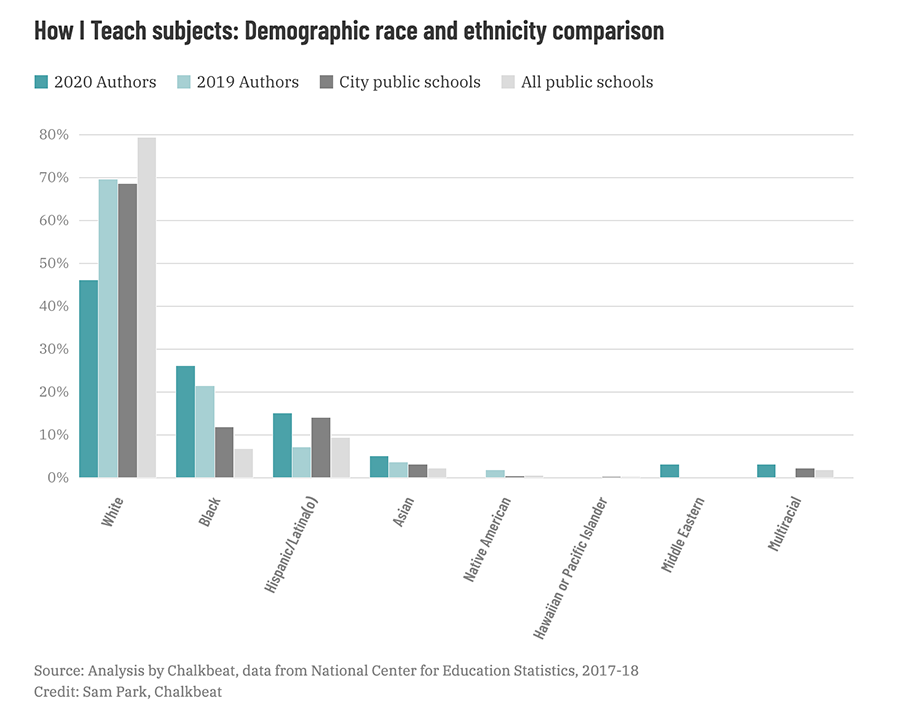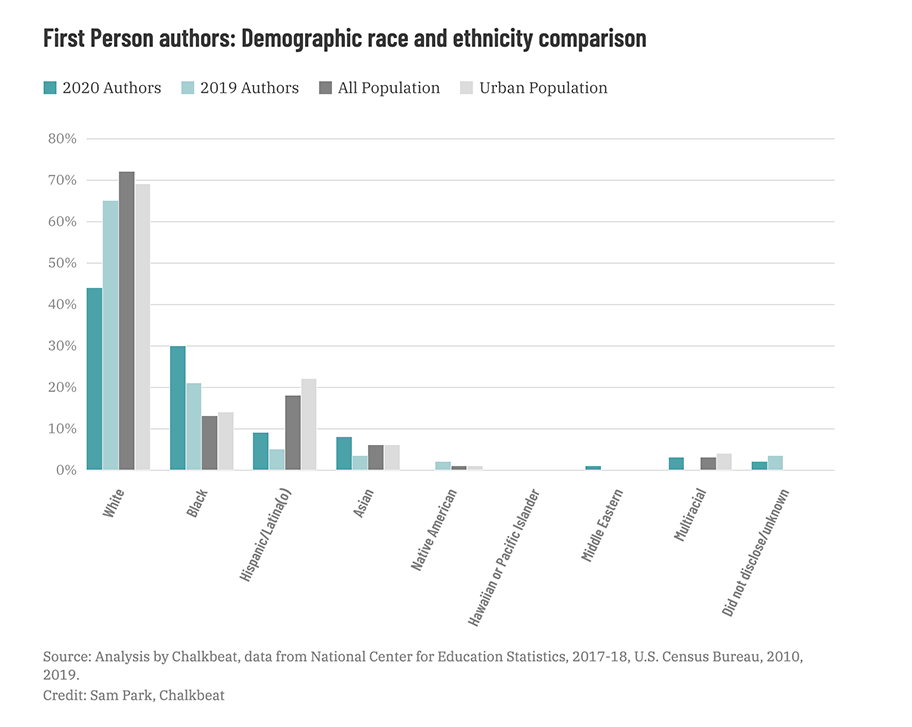
Illustration by Lauren Byrant / Chalkbeat
We’re building a better system for tracking source diversity
Chalkbeat and the Reynolds Journalism Institute want your help to develop the future of source auditingEvery news organization should be able to answer the question: “Does your journalism accurately reflect the communities you serve?”
Historically, we know that disproportionately white newsrooms and the journalism they produce have not been inclusive of Black, Latino, Hispanic, Indigenous communities and others. We must diversify our newsrooms for the sake of our future and our ability to connect with the communities we report with and for.
To this end, we know we have to develop better systems to keep track of whose voices and perspectives we’re elevating. We need these systems to hold ourselves accountable.
We looked for source audit examples from other newsrooms, and we soon realized there is a problem: While many media organizations are trying to do this work, we’ve been doing so in silos and starting from scratch each time.
Some journalists, including Ben Casselman of The New York Times, are doing this on their own, and newsrooms, such as WHYY, KCUR, Spotlight PA, Wisconsin Public Radio, and North Carolina Health News, have made headway with systems ranging from low-tech spreadsheets to building forms into content management systems.
How we started
Two years ago, our then editor-in-chief and a working group of Chalkbeat’s Diversity, Equity, Inclusion, and Belonging committee embarked on a source audit of two popular recurring features: How I Teach, in which reporters interview educators about their best practices and lessons learned, and First Person, essays by parents, students, teachers, and other individuals on the front lines of efforts to improve public education.

For Chalkbeat’s audit, we set up a Google Sheet and manually tallied the gender and race/ethnicity demographics of First Person authors and of the teachers, administrators, and school workers featured in How I Teach throughout 2018 and into 2019. We found that Chalkbeat was overrepresenting white voices compared to the diverse makeup of the school districts we cover. We shared these findings with Gabrielle Birkner, the editor newly overseeing both features, to incorporate race and gender questions into the interviewing and editing process.

In our later analysis of 2020 data, we found that we increased Black and Hispanic/Latina(o) voices. To continue making progress, we need to seek out more voices of Native American and Latino authors and educators, as well as those whose gender identity doesn’t conform to the male-female binary.
While we’d love to expand this audit to the rest of Chalkbeat’s reporting, we realized another problem: Asking our reporters and editors to track this data manually can prove time-consuming and inefficient.
Next steps
We want to create a system where we can efficiently track the diversity of our sources over time, and hold ourselves accountable for representing all the voices in the communities we serve. We also want to build a comprehensive source database for reporters across our expanding network of bureaus.
And we want to solve these problems — and share the solutions, beyond Chalkbeat. In partnership with the Reynolds Journalism Institute at the Missouri School of Journalism this year, we’ll work to create a replicable resource that any journalism organization can use to track and improve source diversity.
We need your help: We’re starting this project with an audit of the audits, so to speak. We want to learn what’s worked and what hasn’t in your newsrooms’ systems for source tracking.
Does your newsroom have lessons to share? Or are you thinking about creating a system of your own? Either way, let us know, we’d love to talk to you.
